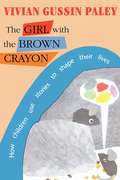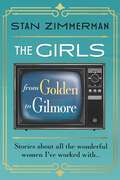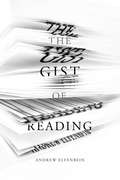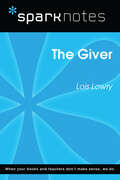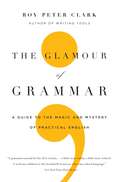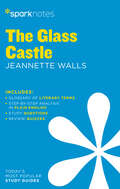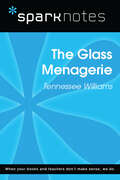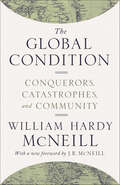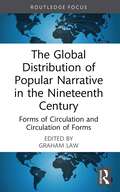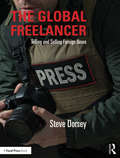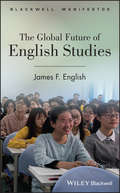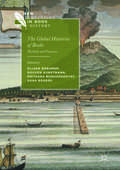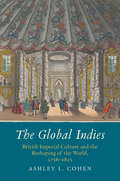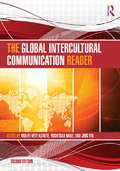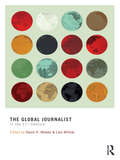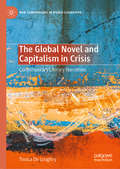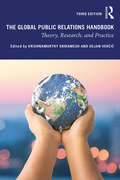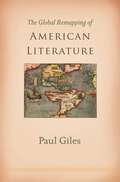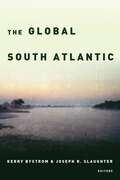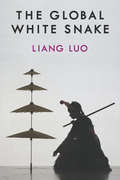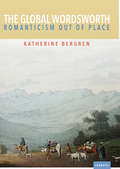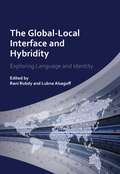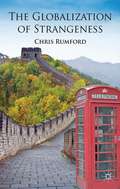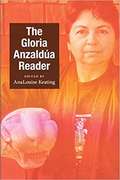- Table View
- List View
The Girl with the Brown Crayon
by Vivian G. PaleyOnce again Vivian Paley takes us into the inquiring minds and the dramatic worlds of young children learning in the kindergarten classroom.
The Girl's Like Spaghetti: Why, You Can't Manage Without Apostrophes!
by Lynne Truss Bonnie TimmonsA giant kids' playground certainly sounds like fun, but you might want to watch out in the giant kid's playground; he has a tendency to step on people. A sign stating, "we're here to help", would definitely disappoint the customers if the apostrophe were removed. Lynne Truss and Bonnie Timmons once again illustrate the hilarious confusion that punctuation can cause.
The Girls: From Golden to Gilmore
by Stan Zimmerman&“...the very definition of a page-turner. READ THIS BOOK!&” – Colin Mochrie, &“Whose Line is It Anyway?,&” &“Hyprov&” Featured on Watch What Happens Live! With Andy Cohen, People Magazine, Queerty Magazine, Fox Digital News, The New York Post, The Daily Mail, The Hollywood Reporter, and Out Magazine.The Girls: From Golden to Gilmore is the story of Stan Zimmerman, a gawky Jewish boy who dreamed of becoming a wildly successful actor, rich enough to build his own mansion in the Hollywood Hills. While the actor part didn't quite pan out, Stan found success as a writer, producer, director, and playwright, working on such shows as The Golden Girls, Roseanne, and Gilmore Girls. Growing up in a small suburb of Detroit, Michigan, Stan was surrounded by three strong, intelligent women-his mother, his grandmother, and his sister-all of whom supported his imagination and creativity. Instead of playing outside, he spent time in his basement directing and acting in plays with the neighborhood kids. At seven-and-a-half years old, he was the youngest student accepted into a prestige summer theater school program. After high school, he was awarded a work/study scholarship to NY/Circle in the Square, where he met his first serious boyfriend and became Andy Warhol's unwitting photo subject one night at Studio 54. He also met Jim Berg, a journalism student at NYU's University Without Walls, forming a writing partnership that has continues to this day. partnership to this day. Their latest project is naturally an all-star, female ensemble Christmas comedy movie for Lifetime! Throughout his life, most of Stan's friendships have been with females. He credits those friendships and the women in his family with his ability to connect with creative women who have played a part in his career success. Accompanied by journal entries, The Girls details Stan's relationships with some of entertainment's most notable women, including Roseanne Barr, Lily Tomlin, Sandra Bernhard, Lauren Graham and Alexis Bledel, and, of course, all four Golden Girls. The Girls: From Golden to Gilmore is a candid, funny, and sometimes poignant testimony about how a young boy turned his dream into reality.
The Gist of Reading
by Andrew ElfenbeinWhat happens to books as they live in our long-term memory? Why do we find some books entertaining and others not? And how does literary influence work on writers in different ways? Grounded in the findings of empirical psychology, this book amends classic reader-response theory and attends to neglected aspects of reading that cannot be explained by traditional literary criticism. Reading arises from a combination of two kinds of mental work: automatic and controlled processes. Automatic processes, such as the ability to see visual symbols as words, are the result of constant practice; controlled processes, such as predicting what might occur next in a story, arise from readers' conscious use of skills and background knowledge. When we read, automatic and controlled processes work together to create the "gist" of reading, the constant interplay between these two kinds of processes. Andrew Elfenbein not only explains how we read today, but also uses current knowledge about reading to consider readers of past centuries, arguing that understanding gist is central to interpreting the social, psychological, and political impact of literary works. The result is the first major revisionary account of reading practices in literary criticism since the 1970s.
The Giver (SparkNotes Literature Guide Series #8)
by SparkNotesThe Giver (SparkNotes Literature Guide) by Lois Lowry Making the reading experience fun! When a paper is due, and dreaded exams loom, here's the lit-crit help students need to succeed! SparkNotes Literature Guides make studying smarter, better, and faster. They provide chapter-by-chapter analysis; explanations of key themes, motifs, and symbols; a review quiz; and essay topics. Lively and accessible, SparkNotes is perfect for late-night studying and paper writing. Includes: • 16 pages devoted to writing a literary essay including: a glossary of literary terms • Step-by-step tutoring on how to write a literary essay • A feature on how not to plagiarize
The Glamour of Grammar: A Guide to the Magic and Mystery of Practical English
by Roy Peter ClarkEarly in the history of English, the words "grammar" and "glamour" meant the same thing: the power to charm. Roy Peter Clark, author of Writing Tools, aims to put the glamour back in grammar with this fun, engaging alternative to stuffy instructionals. In this practical guide, readers will learn everything from the different parts of speech to why effective writers prefer concrete nouns and active verbs. THE GLAMOUR OF GRAMMAR gives readers all the tools they need to"live inside the language"--to take advantage of grammar to perfect their use of English, to instill meaning, and to charm through their writing. With this indispensable book, readers will come to see just how glamorous grammar can be.
The Glass Castle SparkNotes Literature Guide (SparkNotes Literature Guide Series)
by SparkNotesCreated by Harvard students for students everywhere, SparkNotes give you just what you need to succeed in school: Complete Plot Summary and AnalysisKey Facts About the WorkAnalysis of Major CharactersThemes, Motifs, and SymbolsExplanation of Important QuotationsAuthor&’s Historical ContextSuggested Essay Topics25-Question Review QuizThe Glass Castle features explanations of key themes, motifs, and symbols including: strength from hardship; abuse; fire; compassion vs. boundaries; the glass castle; Joshua tree. It also includes detailed analysis of these important characters: Jeannette Walls; Dad (Rex Walls); Mom (Rose Mary Walls).
The Glass Menagerie (SparkNotes Literature Guide Series)
by SparkNotesThe Glass Menagerie (SparkNotes Literature Guide) by Tennessee Williams Making the reading experience fun! Created by Harvard students for students everywhere, SparkNotes is a new breed of study guide: smarter, better, faster.Geared to what today's students need to know, SparkNotes provides:chapter-by-chapter analysis explanations of key themes, motifs, and symbols a review quiz and essay topics Lively and accessible, these guides are perfect for late-night studying and writing papers.
The Global Condition: Conquerors, Catastrophes, and Community
by William Hardy McNeillWilliam H. McNeill is known for his ability to portray the grand sweep of history. The Global Condition is a classic work for understanding the grand sweep of world history in brief compass. Now with a new foreword by J. R. McNeill, this book brings together two of William Hardy McNeill's popular short books and an essay. The Human Condition provides a provocative interpretation of history as a competition of parasites, both biological and human; The Great Frontier questions the notion of "frontier freedom" through an examination of European expansion; the concluding essay speculates on the role of catastrophe in our lives.
The Global Distribution of Popular Narrative in the Nineteenth Century: Forms of Circulation and Circulation of Forms (Routledge Focus on Literature)
by Graham LawThe principal aim of this collection of articles is to explore the evolving generic patterns and the modes of transnational distribution of popular narrative over the course of the nineteenth century. This volume addresses networks of reception drawn around cities as diverse as Constantinople, Moscow, and Tokyo, with a focus on peripheries in South and West Asia, and Northern as well as Eastern Europe; in generic terms, there are specific investigations of shipwreck narratives, satirical cartoons, press reports, orally transmitted folklore, traditional sacred tales, and adventure novels. It combines the materialist approach of book/media history with the aesthetic insights of literary and cultural studies, drawing inspiration from the seminal work of scholars such as Benedict Anderson, Franco Moretti, Pascale Casanova, and Arjun Appadurai.
The Global Freelancer: Telling and Selling Foreign News
by Steve DorseyIn The Global Freelancer, award-winning journalist Steve Dorsey draws on his own experiences, as well as those of fellow reporters and editors, to instruct aspiring freelancers on all aspects of becoming a foreign correspondent. Topics covered include: delivering successful story pitches, location scouting, navigating foreign work documentation and visa requirements, confronting press freedom restrictions, leveraging digital media opportunities, and the new challenges of reporting from conflict zones safely. As newspapers and networks are forced to close their overseas bureaus, news organizations are relying more than ever before on freelancers to fill the gap. This book offers the freelance foreign correspondents of tomorrow step-by-step guidance on how to seize these opportunities and make a name in this competitive field. Packed with practical guidance, tips, and anecdotes from working professionals, The Global Freelancer is your gateway to a career in foreign journalism.
The Global Future of English Studies (Wiley-Blackwell Manifestos #67)
by James F. EnglishThe Global Future of English Studiespresents a succinct, carefully documented assessment of the current state and future trajectory of English studies around the world. Compiles data on student enrollments, faculty hiring, and financing in English studies around the world including China, home to more English majors than the U.S. and U.K. combined Rejects prevailing narratives of contraction and decline that dominate histories of the discipline Stresses English studies' expansion within a rapidly expanding global academic apparatus, and the new challenges and opportunities such sudden and dispersive growth presents Essential reading for anyone interested in studying or teaching English in higher education
The Global Histories of Books
by Elleke Boehmer Rouven Kunstmann Priyasha Mukhopadhyay Asha RogersThis book is an edited volume of essays that showcases how books played a crucial role in making and materialising histories of travel, scientific exchanges, translation, and global markets from the late-eighteenth century to the present. While existing book historical practice is overly dependent on models of the local and the national, we suggest that approaching the book as a cross-region, travelling - and therefore global- object offers new approaches and methodologies for a study in global perspective. By thus studying the book in its transnational and inter-imperial, textual, inter-textual and material dimensions, this collection will highlight its key role in making possible a global imagination, shaped by networks of print material, readers, publishers and translators.
The Global Indies: British Imperial Culture and the Reshaping of the World, 1756-1815 (The Lewis Walpole Series in Eighteenth-Century Culture and History)
by Ashley L. CohenA study of British imperialism&’s imaginative geography, exploring the pairing of India and the Atlantic world from literature to colonial policy In this lively book, Ashley Cohen weaves a complex portrait of the imaginative geography of British imperialism. Contrary to most current scholarship, eighteenth-century Britons saw the empire not as separate Atlantic and Indian spheres but as an interconnected whole: the Indies. Crisscrossing the hemispheres, Cohen traces global histories of race, slavery, and class, from Boston to Bengal. She also reveals the empire to be pervasively present at home, in metropolitan scenes of fashionable sociability. Close-reading a mixed archive of plays, poems, travel narratives, parliamentary speeches, political pamphlets, visual satires, paintings, memoirs, manuscript letters, and diaries, Cohen reveals how the pairing of the two Indies in discourse helped produce colonial policies that linked them in practice. Combining the methods of literary studies and new imperial history, Cohen demonstrates how the imaginative geography of the Indies shaped the culture of British imperialism, which in turn changed the shape of the world.
The Global Intercultural Communication Reader
by Molefi Kete Asante Yoshitaka Miike Jing YinThe Global Intercultural Communication Reader is the first anthology to take a distinctly non-Eurocentric approach to the study of culture and communication. In this expanded second edition, editors Molefi Kete Asante, Yoshitaka Miike, and Jing Yin bring together thirty-two essential readings for students of cross-cultural, intercultural, and international communication. This stand-out collection aims to broaden and deepen the scope of the field by placing an emphasis on diversity, including work from authors across the globe examining the processes and politics of intercultural communication from critical, historical, and indigenous perspectives. The collection covers a wide range of topics: the emergence and evolution of the field; issues and challenges in cross-cultural and intercultural inquiry; cultural wisdom and communication practices in context; identity and intercultural competence in a multicultural society; the effects of globalization; and ethical considerations. Many readings first appeared outside the mainstream Western academy and offer diverse theoretical lenses on culture and communication practices in the world community. Organized into five themed sections for easy classroom use, The Global Intercultural Communication Reader includes a detailed bibliography that will be a crucial resource for today's students of intercultural communication.
The Global Journalist in the 21st Century (Routledge Communication Ser.)
by Lars Willnat David H. WeaverThe Global Journalist in the 21st Century systematically assesses the demographics, education, socialization, professional attitudes and working conditions of journalists in various countries around the world. This book updates the original Global Journalist (1998) volume with new data, adding more than a dozen countries, and provides material on comparative research about journalists that will be useful to those interested in doing their own studies. The editors put together this collection working under the assumption that journalists’ backgrounds, working conditions and ideas are related to what is reported (and how it is covered) in the various news media round the world, in spite of societal and organizational constraints, and that this news coverage matters in terms of world public opinion and policies. Outstanding features include: Coverage of 33 nations located around the globe, based on recent surveys conducted among representative samples of local journalists Comprehensive analyses by well-known media scholars from each country A section on comparative studies of journalists An appendix with a collection of survey questions used in various nations to question journalists As the most comprehensive and reliable source on journalists around the world, The Global Journalist will serve as the primary source for evaluating the state of journalism. As such, it promises to become a standard reference among journalism, media, and communication students and researchers around the world.
The Global Novel and Capitalism in Crisis: Contemporary Literary Narratives (New Comparisons in World Literature)
by Treasa De LoughryThis book examines how contemporary global novels by Salman Rushdie, David Mitchell, Rana Dasgupta and Rachel Kushner have evolved new aesthetics to represent global economic and ecological crises. Paying close attention to the interrelations between postcolonial, world, and global literatures, this book argues that postcolonial literary studies cannot account for global crises that exceed the national and anti-colonial. Advocating an interdisciplinary framework informed by a synthesis of materialist literary theory with world-systems theory, combining Fredric Jameson and Georg Lukács with Giovanni Arrighi and Jason W. Moore, this book examines how global literatures metabolise not only socioeconomic conditions, but also transformations in the world-ecology, and emergent developmental and epochal crises of capitalism.
The Global Public Relations Handbook: Theory, Research, and Practice
by Dejan Vercic Krishnamurthy SrirameshIn this third edition, The Global Public Relations Handbook: Theory, Research, and Practice offers state-of-the-art discussions of the global public relations industry, blending research-based theory with practice, and presented in essays from both academics and practitioners. This edition's 28 essays in three sections take into account changes in the global communication landscape especially in the last ten years. The first section contains essays that provide conceptual linkages between public relations and international political systems, economic systems and levels of development, societal culture, different media systems including digital media, and activism. Essays in the second section discuss the communication of various global actors such as corporations (including family-owned enterprises), non-profits, governments (and public sector enterprises), global public relations agencies, IGOs such as the European Union and NATO and "informal" organizations such as hactivist groups, terrorists, and failed states. The third section discusses key global communication issues such as climate change, character assassination as a communication tool, internal communication, risk and crisis communication, public affairs, and public diplomacy. This will be an essential resource for students and researchers of public relations, strategic communication, and international communication.
The Global Remapping of American Literature
by Paul GilesThis book charts how the cartographies of American literature as an institutional category have varied radically across different times and places. Arguing that American literature was consolidated as a distinctively nationalist entity only in the wake of the U.S. Civil War, Paul Giles identifies this formation as extending until the beginning of the Reagan presidency in 1981. He contrasts this with the more amorphous boundaries of American culture in the eighteenth century, and with ways in which conditions of globalization at the turn of the twenty-first century have reconfigured the parameters of the subject. In light of these fluctuating conceptions of space, Giles suggests new ways of understanding the shifting territory of American literary history. ranging from Cotton Mather to David Foster Wallace, and from Henry Wadsworth Longfellow to Zora Neale Hurston. Giles considers why European medievalism and Native American prehistory were crucial to classic nineteenth-century authors such as Emerson, Hawthorne, and Melville. He discusses how twentieth-century technological innovations, such as air travel, affected representations of the national domain in the texts of F. Scott Fitzgerald and Gertrude Stein. And he analyzes how regional projections of the South and the Pacific Northwest helped to shape the work of writers such as William Gilmore Simms, José Martí, Elizabeth Bishop, and William Gibson. Bringing together literary analysis, political history, and cultural geography, The Global Remapping of American Literature reorients the subject for the transnational era.
The Global South Atlantic
by Kerry Bystrom and Joseph R. SlaughterNot only were more African slaves transported to South America than to North, but overlapping imperialisms and shared resistance to them have linked Africa, Latin America, and the Caribbean for over five centuries. Yet despite the rise in transatlantic, oceanic, hemispheric, and regional studies, and even the growing interest in South-South connections, the South Atlantic has not yet emerged as a site that captures the attention it deserves.The Global South Atlantic traces literary exchanges and interlaced networks of communication and investment—financial, political, socio-cultural, libidinal—across and around the southern ocean. Bringing together scholars working in a range of languages, from Spanish to Arabic, the book shows the range of ways people, governments, political movements, social imaginaries, cultural artefacts, goods, and markets cross the South Atlantic, or sometimes fail to cross.As a region made up of multiple intersecting regions, and as a vision made up of complementary and competing visions, the South Atlantic can only be understood comparatively. Exploring the Atlantic as an effect of structures of power and knowledge that issue from the Global South as much as from Europe and North America, The Global South Atlantic helps to rebalance global literary studies by making visible a multi-textured South Atlantic system that is neither singular nor stable.
The Global White Snake (China Understandings Today)
by Liang LuoThe Global White Snake examines the Chinese White Snake legends and their extensive, multidirectional travels within Asia and across the globe. Such travels across linguistic and cultural boundaries have generated distinctive traditions as the White Snake has been reinvented in the Chinese, Japanese, Korean, and English-speaking worlds, among others. Moreover, the inter-Asian voyages and global circulations of the White Snake legends have enabled them to become repositories of diverse and complex meanings for a great number of people, serving as reservoirs for polyphonic expressions ranging from the attempts to consolidate authoritarian power to the celebrations of minority rights and activism. The Global White Snake uncovers how the White Snake legend often acts as an unsettling narrative of radical tolerance for hybrid sexualities, loving across traditional boundaries, subverting authority, and valuing the strange and the uncanny. A timely mediation and reflection on our contemporary moment of continued struggle for minority rights and social justice, The Global White Snake revives the radical anti-authoritarian spirit slithering under the tales of monsters and demons, love and lust, and reminds us of the power of the fantastic and the fabulous in inspiring and empowering personal and social transformations.
The Global Wordsworth: Romanticism Out of Place (Transits: Literature, Thought & Culture 1650-1850)
by Katherine BergrenThe Global Wordsworth charts the travels of William Wordsworth’s poetry around the English-speaking world. But, as Katherine Bergren shows, Wordsworth’s afterlives reveal more than his influence on other writers; his appearances in novels and essays from the antebellum U.S. to post-Apartheid South Africa change how we understand a poet we think we know. Bergren analyzes writers like Jamaica Kincaid, J. M. Coetzee, and Lydia Maria Child who plant Wordsworth in their own writing and bring him to life in places and times far from his own—and then record what happens. By working beyond narratives of British influence, Bergren highlights a more complex dynamic of international response, in which later writers engage Wordsworth in conversations about slavery and gardening, education and daffodils, landscapes and national belonging. His global reception—critical, appreciative, and ambivalent—inspires us to see that Wordsworth was concerned not just with local, English landscapes and people, but also with their changing place in a rapidly globalizing world. This study demonstrates that Wordsworth is not tangential but rather crucial to our understanding of Global Romanticism. Published by Bucknell University Press. Distributed worldwide by Rutgers University Press.
The Global-Local Interface and Hybridity
by Lubna Alsagoff Rani RubdyThe chapters in this volume seek to bring hybrid language practices to the center of discussions about English as a global language. They demonstrate how local linguistic resources and practices are involved in the refashioning of identities in a variety of cross-cultural and geographical contexts, and illustrate hybridity as an enactment of resistance and creativity. Drawing on a variety of disciplines and ideological perspectives, the authors use contexts as diverse as social media, Bollywood films, workplaces and kindergartens to explore the ways in which English has become a part of localities and social relations in ways that are of significant sociolinguistic interest in understanding the dynamics of mobile cultures and transcultural flows.
The Globalization of Strangeness
by Chris RumfordThe figure of the stranger is in serious need of revision, as is our understanding of the society against which the stranger is projected. Under conditions of globalization, inside/outside markers have been eroded and conventional indicators of 'we-ness' are no longer reliable. We now live in a generalized state of strangeness, one consequence of globalization: we no longer know where our community ends and another one begins. In such circumstances it is often the case that neighbours are the nearest strangers. Strangeness occurs when global consciousness outstrips global connectivity and this means that we need to rethink some core elements of globalization theory. Under conditions of strangeness the stranger is a 'here today, gone tomorrow' figure. This book identifies the cosmopolitan stranger as the most significant contemporary figure of the stranger, one adept at negotiating the 'confined spaces' of globalization in order to promote new forms of social solidarity and connect with distant others.
The Gloria Anzaldúa Reader (Latin America Otherwise)
by Gloria Anzaldúa AnaLouise KeatingBorn in the Río Grande Valley of south Texas, independent scholar and creative writer Gloria Anzaldúa was an internationally acclaimed cultural theorist. As the author of Borderlands / La Frontera: The New Mestiza, Anzaldúa played a major role in shaping contemporary Chicano/a and lesbian/queer theories and identities. As an editor of three anthologies, including the groundbreaking This Bridge Called My Back: Writings by Radical Women of Color, she played an equally vital role in developing an inclusionary, multicultural feminist movement. A versatile author, Anzaldúa published poetry, theoretical essays, short stories, autobiographical narratives, interviews, and children’s books. Her work, which has been included in more than 100 anthologies to date, has helped to transform academic fields including American, Chicano/a, composition, ethnic, literary, and women’s studies. This reader—which provides a representative sample of the poetry, prose, fiction, and experimental autobiographical writing that Anzaldúa produced during her thirty-year career—demonstrates the breadth and philosophical depth of her work. While the reader contains much of Anzaldúa’s published writing (including several pieces now out of print), more than half the material has never before been published. This newly available work offers fresh insights into crucial aspects of Anzaldúa’s life and career, including her upbringing, education, teaching experiences, writing practice and aesthetics, lifelong health struggles, and interest in visual art, as well as her theories of disability, multiculturalism, pedagogy, and spiritual activism. The pieces are arranged chronologically; each one is preceded by a brief introduction. The collection includes a glossary of Anzaldúa’s key terms and concepts, a timeline of her life, primary and secondary bibliographies, and a detailed index.
